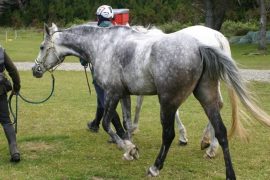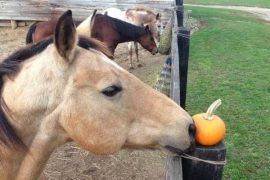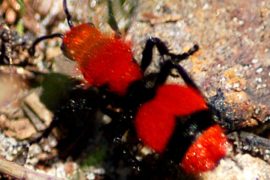Table of Contents
Are bearded dragons suitable for beginners?
Which bearded dragons are suitable for beginners? Beginners should opt for the dwarf bearded dragon (Pogona henrylawsoni) and the striped bearded dragon (Pogona vitticeps).
Are bearded dragons difficult to keep?
Basically, you should know that the bearded dragon is a “beginner’s animal”, but it is not undemanding when it comes to keeping it.
Can you pet a bearded dragon?
The animals only tolerate being touched because they usually have a very calm nature. In principle, however, bearded dragons belong in their living environment, which is the terrarium in this case. They should only be taken out for vet visits or to put them in an outdoor enclosure.
Are bearded dragons biting?
They are considered to be rather easy to care for, and they are neither biting nor poisonous.
How much does a bearded dragon cost?
Smaller specimens or not so colorful animals can be purchased from around 20 euros. In the case of adult bearded dragons and special species, however, the price can also be far higher. However, most adult animals cost around 100 euros.
How often can you feed a bearded dragon?
Animal nutrition of bearded dragons. As already mentioned, you can give the live food two to four times a week.
How many crickets a day bearded dragon?
Per day ok, later about 4-5 pieces. By six months at the latest, live food is switched to about 3 times a week, and there should also be a fasting day. Adult animals only get live food once or twice a week.
How long can a bearded dragon go without eating?
Adult bearded dragons can go about 4 weeks without food if they have adequate fat reserves. However, this is not recommended and should be fed daily.
Can bearded dragons eat bananas?
In principle, kiwi or banana should never be fed, as these Eastern varieties lead to constipation and other digestive problems. All other types of fruit such as apples, pears, strawberries, raspberries, mangoes, papaya or, for example, blackberries may only be fed in very small quantities.
How often does a bearded dragon have a bowel movement?
Most young animals still defecate every 1-2 days, but as the animals get older, it can become less frequent. But if the animal suddenly doesn’t defecate for a week, you start to worry that the bearded dragon might be constipated.
What kind of salad can bearded dragons eat?
| Salad | vegetables | Herbs and spices |
| Chicoree | Broccoli | Basil |
| iceberg lettuce | Chinakohl | savory |
| guess | Fennel green (not the bulb!) | Dill |
| Lamb’s lettuce | Cucumber (low nutritional value) | catnip |
| lettuce | carrots (incl. green) | chervil |
| Lollo Bionda | Kohlrabi leaves (no tubers!) | cress |
| Red Lollo | Pumpkin (except peel and seeds) | lovage |
| Radicchio | Chard (oxalic acid) | marjoram |
| Romaine salad | Okra | Oregano |
| Rucola/Rauke | Paprika (organic, as it is often heavily sprayed!) | parsley (lots of oxalic acid!) |
| Porree | peppermint | |
| radish | Rosemary | |
| Radieschengrün | sage | |
| Cauliflower | chives | |
| Rotate Bete | Sprouts (cress, mung beans, alfalfa…) | |
| celery leaves | Thymian | |
| Spinach (lots of oxalic acid!) | lemon balm | |
| star fruit | Luzerne | |
| tomatoes | ||
| Zucchini (also flowers) |
| wild plants | indoor/garden plants | fruit |
| maple leaves | Dahlias (leaves and flowers) | Apple |
| Borretsch | Hibiscus (leaves and flowers) | Banana |
| Blackberries (fruit and leaves) | Creeping Beautifulcushion (Golliwoog) | pear |
| daisy | roses (leaves and flowers) | blackberries |
| goutweed | pansies (flowers) | strawberries |
| Goldnessel | blueberries | |
| rosehip blossoms | raspberries | |
| hazelnut leaves | kiwi (high acidity) | |
| Raspberries (fruit and leaves) | Mango | |
| shepherd’s purse | Papaya | |
| Jasmin | ||
| Camomile | ||
| Klee | ||
| cornflower blossoms | ||
| dandelion | ||
| mallow flowers | ||
| Night candle | ||
| petunia flowers | ||
| purslane | ||
| marigold | ||
| buckhorn | ||
| pigeon nettles | ||
| violet | ||
| forget Me Not | ||
| Chickweed | ||
| Wegwarte | ||
| grape leaves | ||
| Zaunwinde |
What is poisonous to bearded dragons?
Efeu (Hedera helix) Fingerhut (Digitalis pururea) Fliegenpilz (Amanita muscaria) Geissblatt (Lonicera xylosteum).
How often do you have to clean bearded dragons?
In principle, every owner of one or more bearded dragons should clean the terrarium daily after feeding. Removing faeces and urine using a standard cat scoop, for example, is a must.
Are bearded dragons notifiable?
The pet shops also have this information and I think they stick to it. However, your bearded dragon is not subject to registration.
How much does a bearded dragon terrarium cost?
Calculate roughly the following costs for a bearded dragon: Terrarium body: 200 – 350 euros. Quarantine terrarium: approx. 180 – 220 euros.
How do I tame my bearded dragon?
They often turn their heads when they hear him. However, if the animal is to become really tame, it still needs a bit of time and training. The contact or the hand of the owner should always connect the bearded dragon with something positive. Of course, delicious food is suitable for this.
What fruit can bearded dragons eat?
Recommended fruit for bearded dragons are apples, mangoes and strawberries. Cucumbers, tomatoes, peppers and blueberries. You should stay away from citrus fruits and other fruits with a high acid content.
How long does a bearded dragon need to sleep?
However, the researchers also discovered some differences: the lizards’ sleep rhythm, for example, is extremely regular and fast: at a temperature of 27 degrees Celsius, a sleep cycle only lasts around 80 seconds. In contrast, it lasts around 30 minutes in cats and around 60 to 90 minutes in humans.
What does it mean when bearded dragons wave?
When the bearded dragon waves, it’s basically the opposite gesture to a nod. When a subordinate animal is oppressed by a dominant animal, it beckons appeasement. It wants to avoid a fight. A wave can also indicate a female’s willingness to mate during courtship.
What do you need for a bearded dragon?
Origin/Distribution: Australia
Habitat: semi-desert, steppe, dry forests
Weight: between 35 and 400 grams, depending on the species
Life expectancy: 10 years and more
Terrarium size: Pogona vitticeps pair: 160 x 80 x 80 cm (LxWxH), Pogona henrylawsoni pair: 120 x 60 x 60 cm (LxWxH)
Keeping: Solitary, pair or harem
Temperatures in the terrarium: 28 – 33 °C
Humidity in the terrarium: 40% per day
Terrarium substrate: fine gravel or loamy red sand
Terrarium furnishings: flat rocks, roots, branches, succulents and agaves
Diet: animal and vegetable food
Special features: diurnal, hibernation
Social behavior: loner
Difficulty in keeping: aggressive towards conspecifics
Socialization: Frilled Lizards, Thorntails





